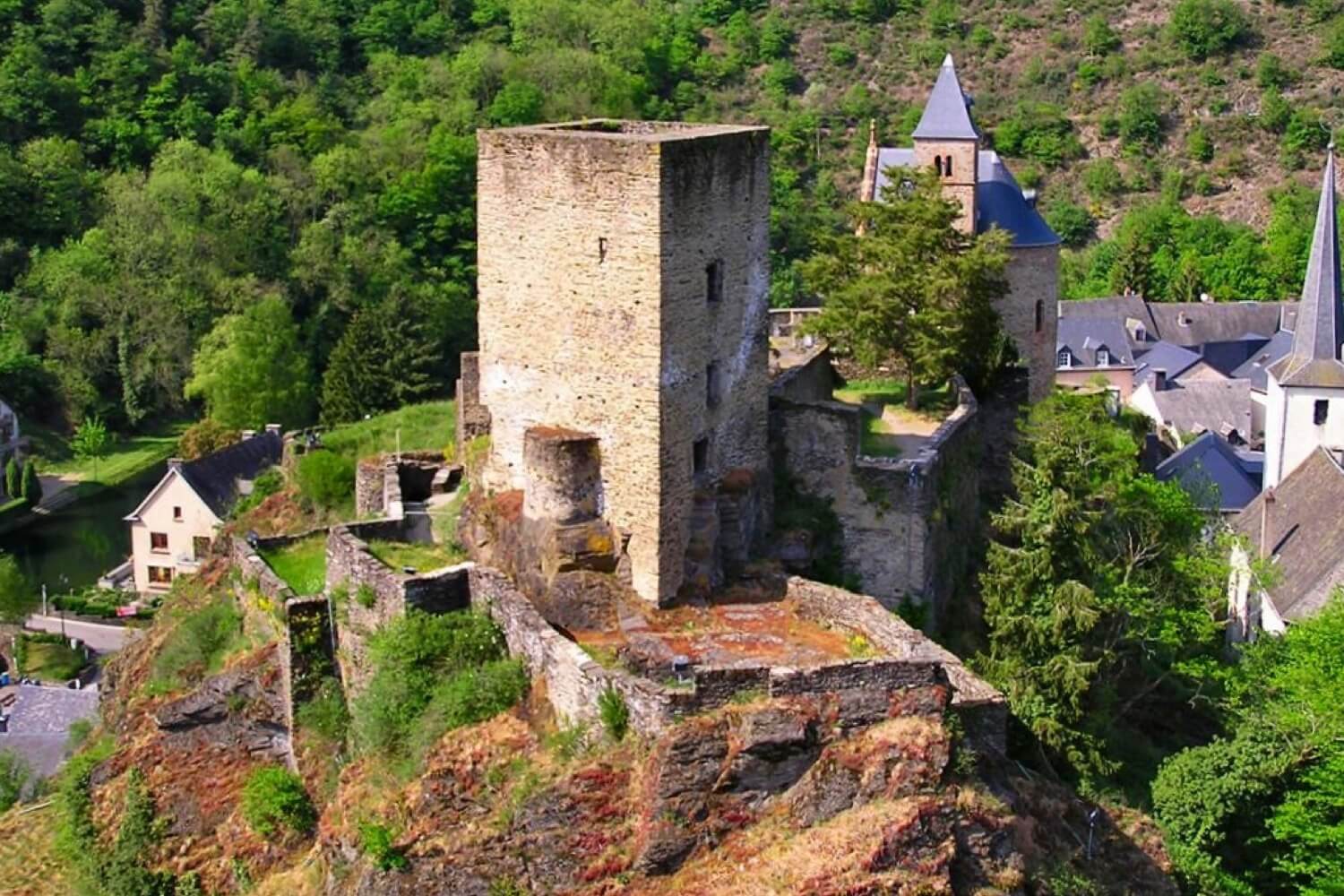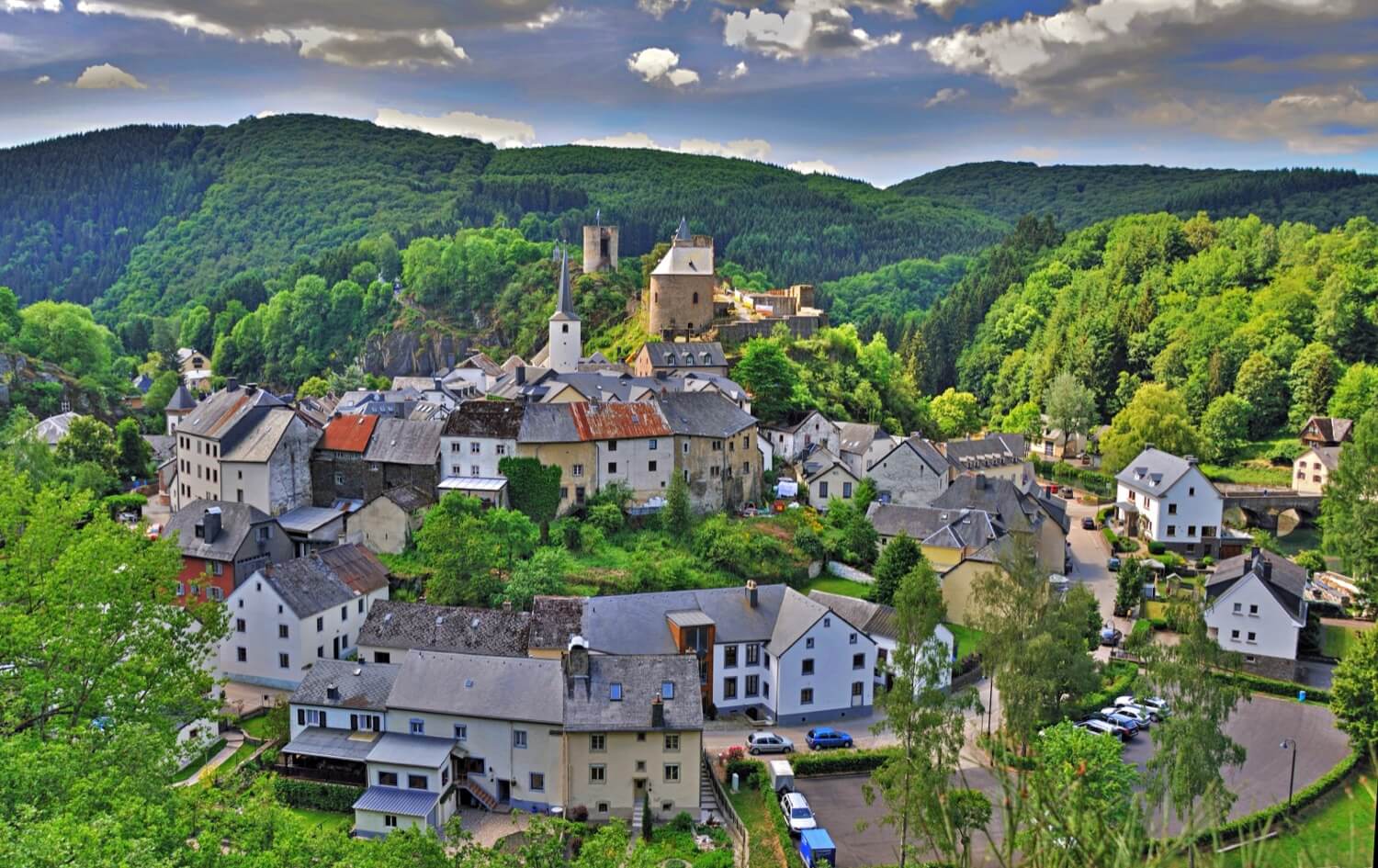Esch-sur-Sûre Castle
Esch-sur-Sûre Wiltz Luxemburg
castle, chateau
Château d'Esch-sur-Sûre
Esch-sur-Sûre Wiltz Luxemburg
castle, chateau
Burg Esch-Sauer
Esch-sur-Sûre Wiltz Luxemburg
castle, chateau
Esch-sur-Sûre Castle, now a ruin, is located on a spur in the small town of Esch-sur-Sûre in the north-west of Luxembourg
Le château d’Esch-sur-Sûre est un château fort situé dans le village luxembourgeois d’Esch-sur-Sûre
Die Burg Esch-Sauer ist eine luxemburgische Höhenburg bei Esch im Kanton Wiltz, deren Ursprünge in das 10
Previous names
Esch-sur-Sûre Castle, Château d'Esch-sur-Sûre, Burg Esch-Sauer
Description
Esch-sur-Sûre Castle, now a ruin, is located on a spur in the small town of Esch-sur-Sûre in the north-west of Luxembourg. It is naturally protected by a sharp meander in the River Sûre which surrounds the town and the castle on three sides.
History
In 927, a certain Meginaud or Maingaud and his wife Hiletrude acquired the site of Esch-sur-Sûre where he built a Romanesque tower eight metres square as well as farm buildings. The castle was considerably enlarged in the Gothic style by the two last Counts of Esch during the 13th century.
The Castle above the town
With the introduction of gunpowder in the 15th century, additional defences were required. The entire village was reinforced with a solid wall stretching 450 metres around the village complete with two defensive towers. The round watchtower or Lochturm opposite the keep was also built in the 15th century as were the entrance gate and the castle stables. The castle started to deteriorate in the middle of the 16th century and was dismantled in 1685 by the troops of Louis XIV. The outer wall was however left intact as many of the houses used of it for their back walls. The castle fell into the hands of commoners. When Victor Hugo visited the village in 1871, several families were still living there. In 1902, the Egyptian Martin Riano d’Hutzt bought the ruins from the State for 1,000 francs. He charged the architect Charles Arendt with restoration work and the chapel was restored in 1906 but then funds appear to have run out.
The castle today
Today only the ruins of the castle remain although the State acquired the site in 2005 and began restoration work the following year. The site is open to the public and is illuminated in the evenings.
Le château d’Esch-sur-Sûre est un château fort situé dans le village luxembourgeois d’Esch-sur-Sûre.
Le premier témoignage écrit de l’existence d’Esch-sur-Sûre se retrouve dans le « Liber aureus Epternacensis ». Dans ce livre de l’abbaye d'Echternach, il est noté qu’un certain Nebelungus a fait don de ses propriétés avec serfs de « Hesc » à l’abbaye. Cet acte remonte à l’an 3 du règne de Charlemagne, c’est-à-dire entre le 9 octobre 773 et le 9 octobre 774.
Le 3 juin 927, Meginaud acquiert par échange avec l’abbaye de Stavelot, le site d’Esch-sur-Sûre et il y érige une tour d’habitation carrée de 8 x 8 mètres et des bâtiments d’exploitation agricole.
Les deux derniers seigneurs de la lignée des comtes d’Esch ont considérablement agrandi leur territoire et leur château : à la fin du xie siècle, la seigneurie d’Esch-sur-Sûre compte 19 villages et hameaux et s’étendait jusqu’à Diekirch.
En 1285, le seigneur d'Esch est l'une des figures importantes du Tournoi de Chauvency, œuvre de Jacques Bretel.
Avec l’apparition de la poudre au xve siècle, il faut adapter les constructions défensives. Ainsi, tout le village est entouré d’un mur d'enceinte de 450 m de long et de 1,5 m de large avec deux tours défensives. La tour de guet ronde est également fortifiée.
La décadence du château fort débute vers le milieu du xvie siècle pour se terminer au xixe siècle : après la prise de la forteresse de Luxembourg en 1685, les troupes de Louis XIV s’emploient à démanteler les places fortes du pays.
Néanmoins, à Esch-sur-Sûre, on n’a pas détruit le mur d’enceinte, parce que des maisons y étaient adossées et certaines le sont toujours.
Vers le milieu du xixe siècle, le château passe entre les mains de bourgeois qui y habitent et, lorsque Victor Hugo le visite à l’été 1871, le château abrite toujours plusieurs familles.
Die Burg Esch-Sauer ist eine luxemburgische Höhenburg bei Esch im Kanton Wiltz, deren Ursprünge in das 10. Jahrhundert zurückreichen und die heute als Ruine erhalten ist.
Geschichte
Der Fels, auf dem die Burg fußt, wurde im Jahre 927 von Meginold erworben. Vorher stand er im Besitz der Abtei Stavelot. Viel weiß man aus dieser Zeit nicht, nur dass Meginolds Nachkommen – Gottfried und Heinrich – die hier errichtete Burg verließen, um in den ersten Kreuzzug (1096–1099) zu ziehen. Im 14. Jahrhundert ging die Burg aus dem Familienbesitz und wurde zwischen drei Familien der Gegend aufgeteilt: Brandenbourg, Kronenburg und Falkenstein.
Das erste Gebäude war – wie zur Entstehungszeit im Burgenbau üblich – ein simpler, quadratischer Bergfried, der heute noch emporragt. Die strategische Begründung für die Burg liegt in der Furt, die hier die Passage der Sauer zuließ. In gotischem Baustil wurde zwischen dem 12. und dem 14. Jahrhundert die Burg wesentlich in Richtung Norden erweitert, hauptsächlich durch weitere, befestigte Burggebäude, teils auch in die Felsform terrassiert. Um das 14. Jahrhundert herum wurde das Dorf am Fuße des Felsen zunehmend wichtiger. Um die Sicherheit der Leibeigenen zu garantieren, wurde um den Weiler eine Mauer gezogen, an deren Form sich der zukünftige Häuserbau anschloss. Im 15. Jahrhundert wurde südlich des ursprünglichen Bergfriedes ein runder Lugturm errichtet. Zwischen ihm und dem Bergfried liegt ein 30 m breiter und 20 m tiefer Burggraben. In der Renaissance war das Interesse an der Burg geringer. Das Eingangstor im Norden wurde jedoch erneuert.
Bis zur Französischen Revolution (die sich bis nach Luxemburg propagierte) hielten die drei Familienhäuser die Burg in Stand. Mitte des 19. Jahrhunderts verwalteten die Bauern des Dorfes das Bollwerk. Sie flickten die Dächer mit Stroh und auch sonst in einem eher unteilhabenden Geiste, was der berühmte französische Schriftsteller Victor Hugo die "Rache des Dorfes an der Herrschaft" nannte. Als der Staat sie 1893 aufkaufte, war sie bereits eine Ruine.
Renovation und Erweiterungen in der Neuzeit
Zwischen 1903 und 1906 wurde der Architekt Charles Arendt damit beauftragt, den Bergfried und die Burgkapelle wieder aufzubauen. Den Glockenturm, den er dabei der Kapelle verlieh, hat er hinzuerfunden; Burgkapellen hatten für gewöhnlich keinen Glockenturm. Verschiedene Ornamente aus rotem Sandstein wurden für die Innenräume rekonstruiert. Der Rest der Burg wurde nur vor weiterem Zerfall bewahrt. Bei der Bedachung der Kapelle übersah man auch, dass ihr Dach ursprünglich vermutlich als Geschützturm benutzt wurde; Bogenscharten umsäumen den halbrunden Bau.
Useful information
Free
Free
- Audio guide
- 360 ° panorama view
-
-
Nearby castles
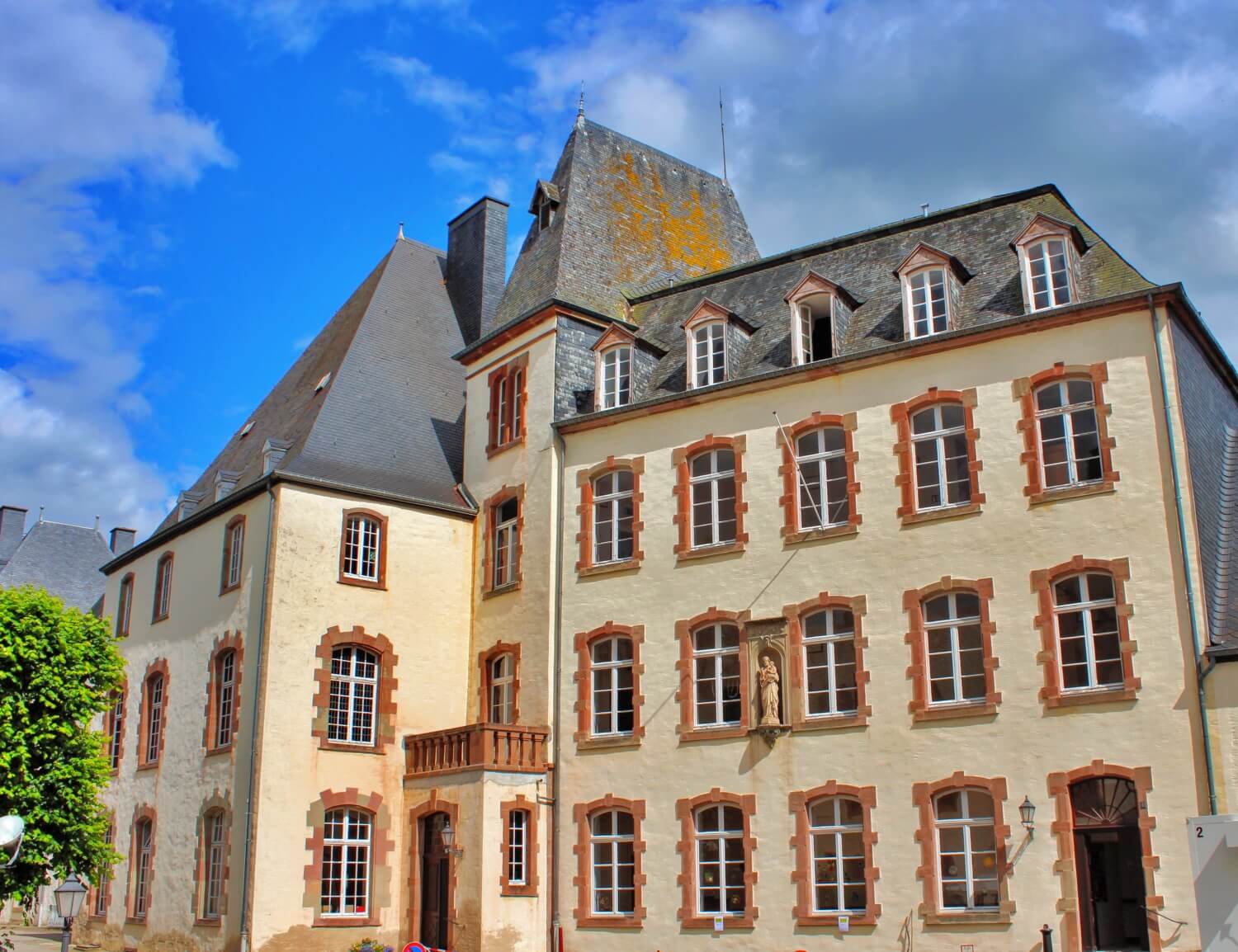
Wiltz Castle
Wiltz
6.2km
castle, chateau
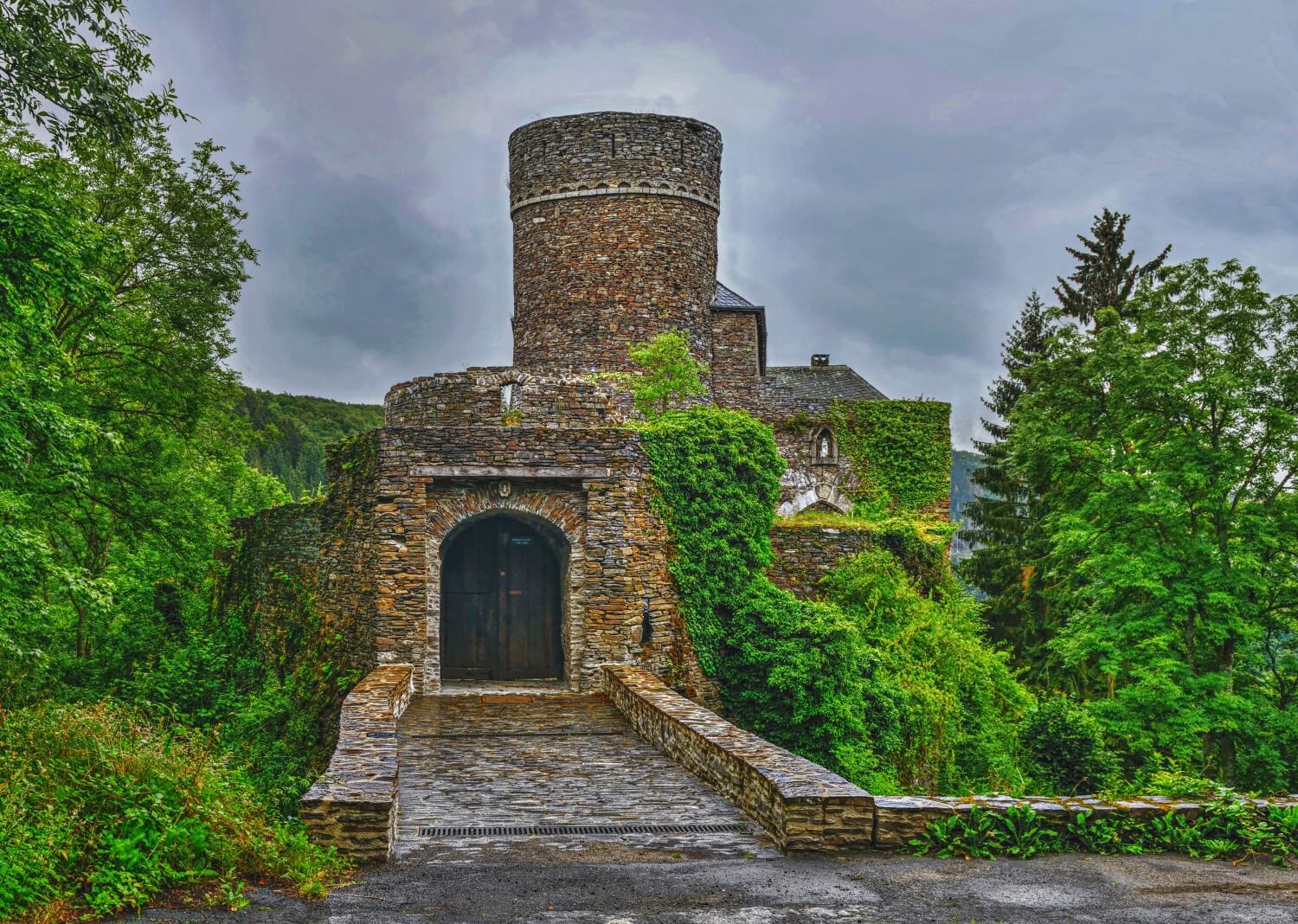
Schuttbourg Castle
Kiischpelt
8.9km
castle, chateau
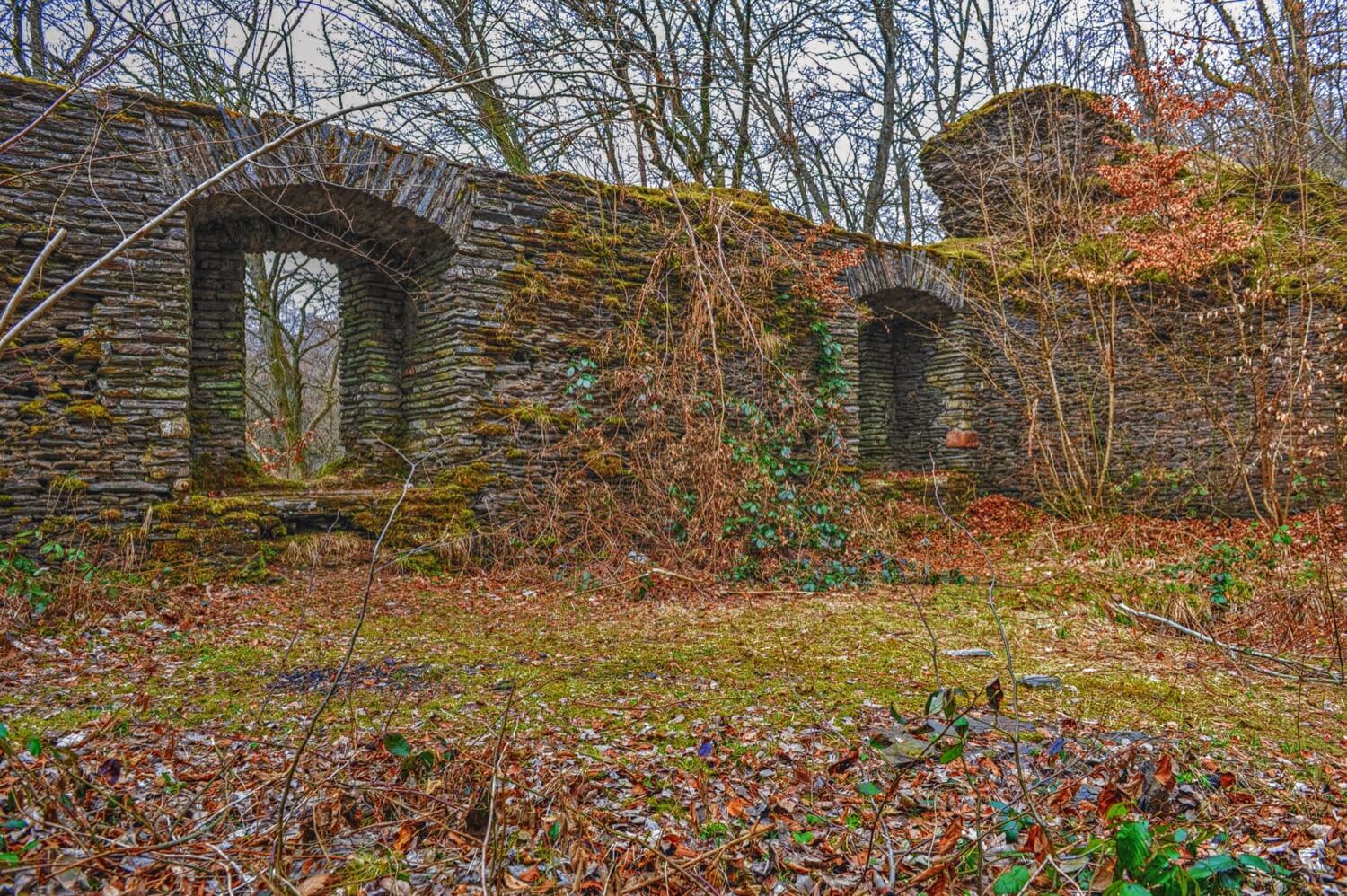
Schorels Castle
Wahl
9.7km
castle, chateau
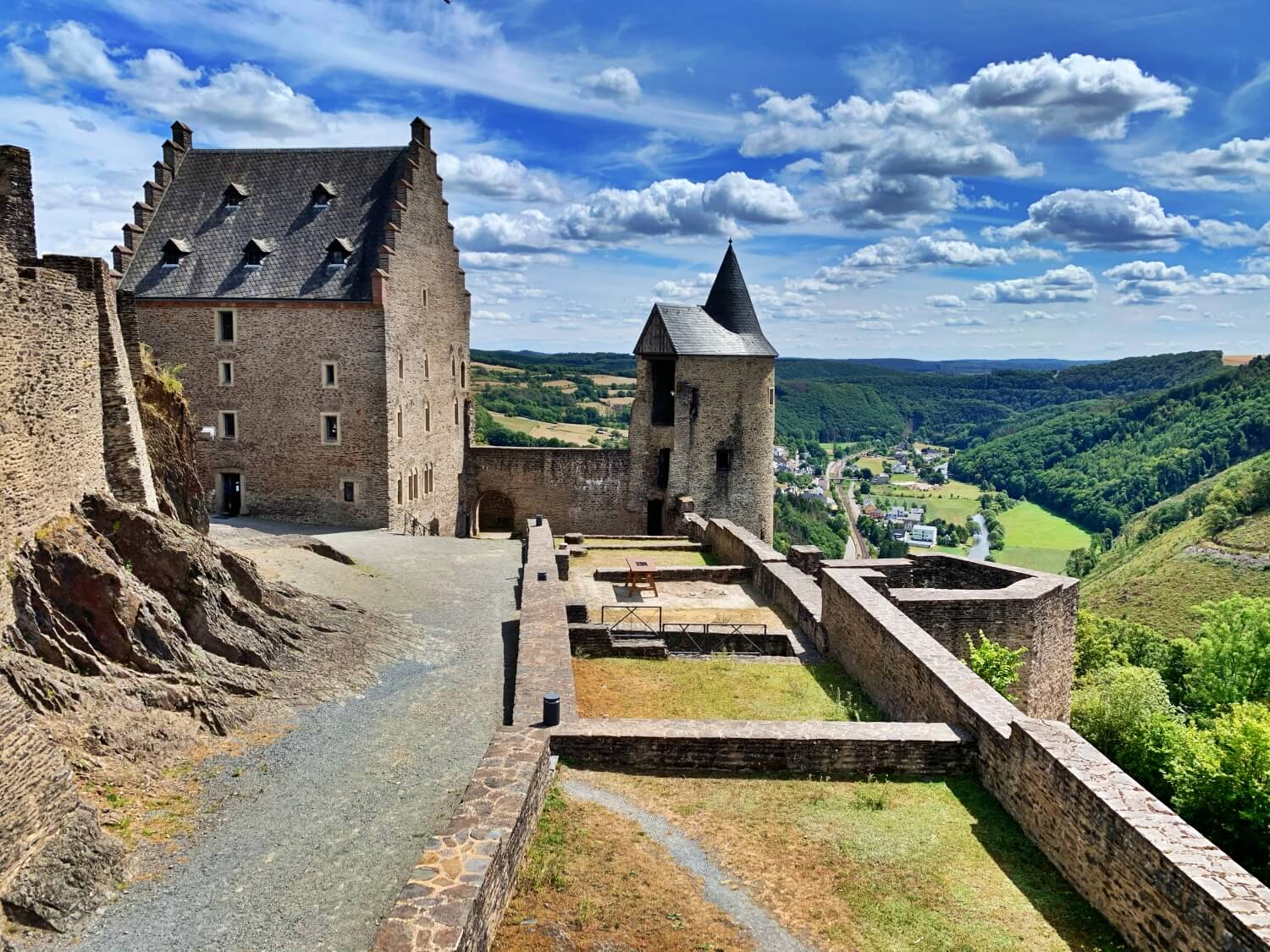
Bourscheid Castle
Bourscheid
10.4km
castle, chateau
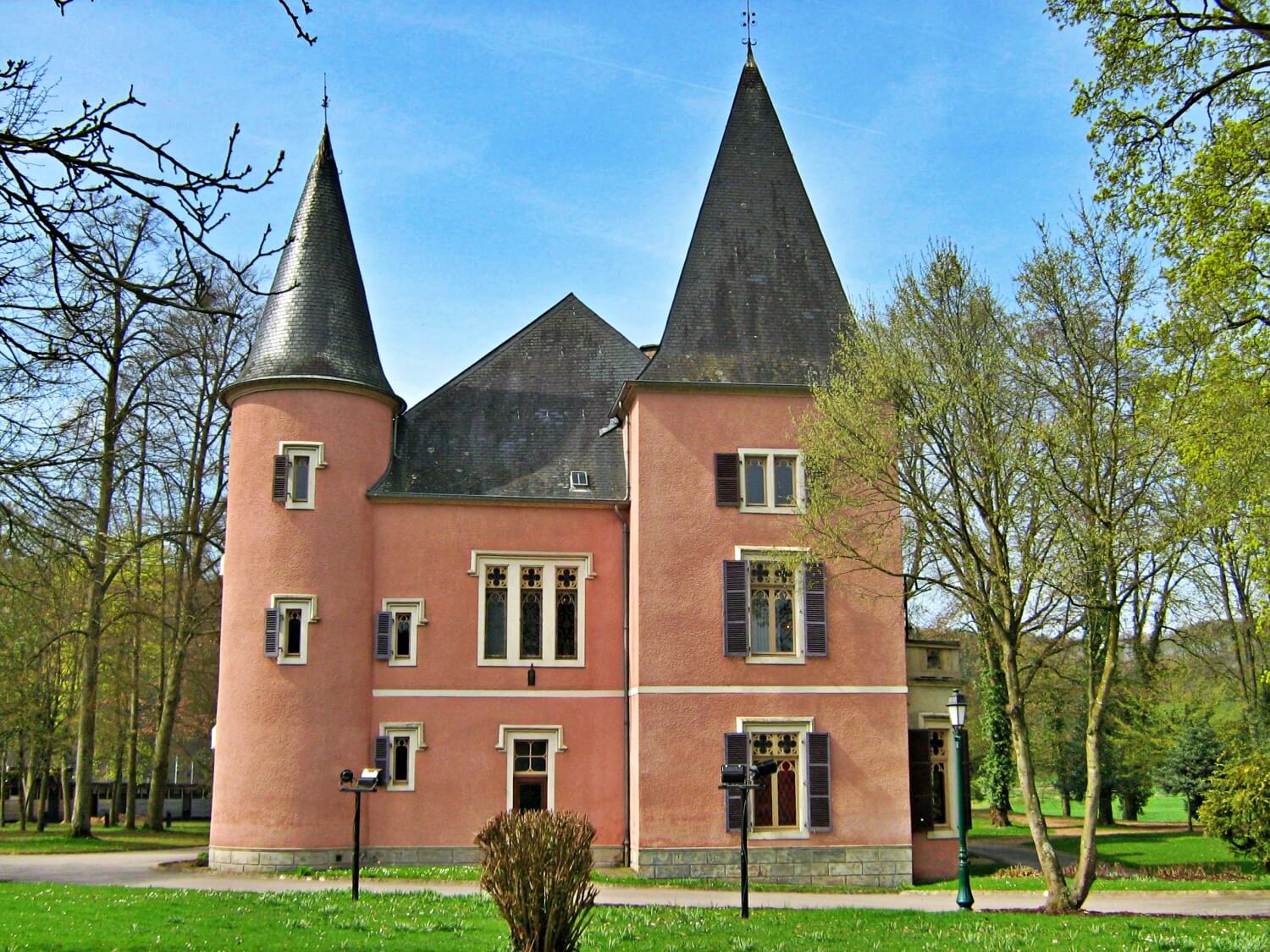
Erpeldange Castle
Erpeldange-sur-Sûre
13.9km
castle, chateau
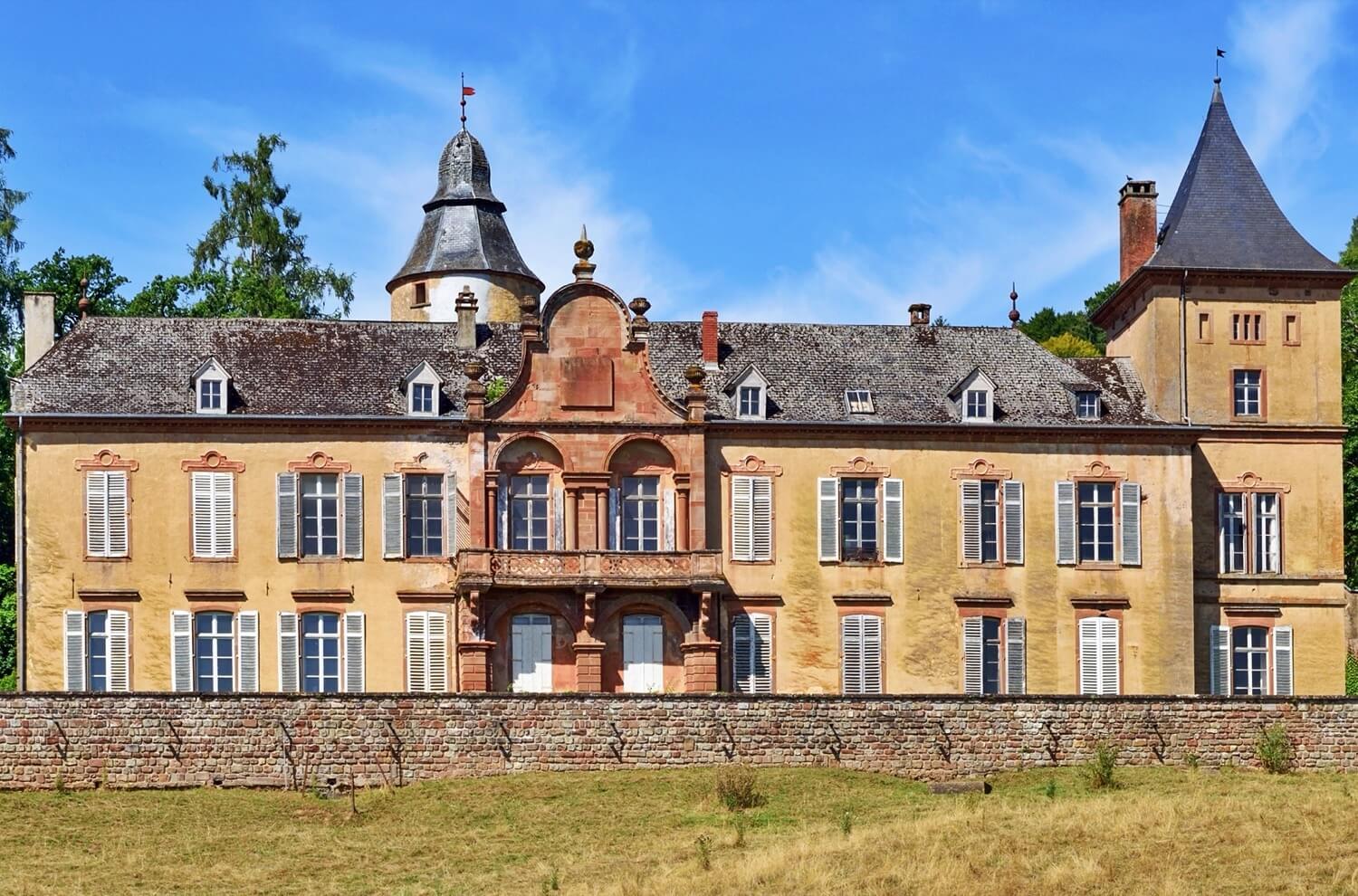
Birtrange Castle
Colmar-Berg
14.5km
castle, chateau
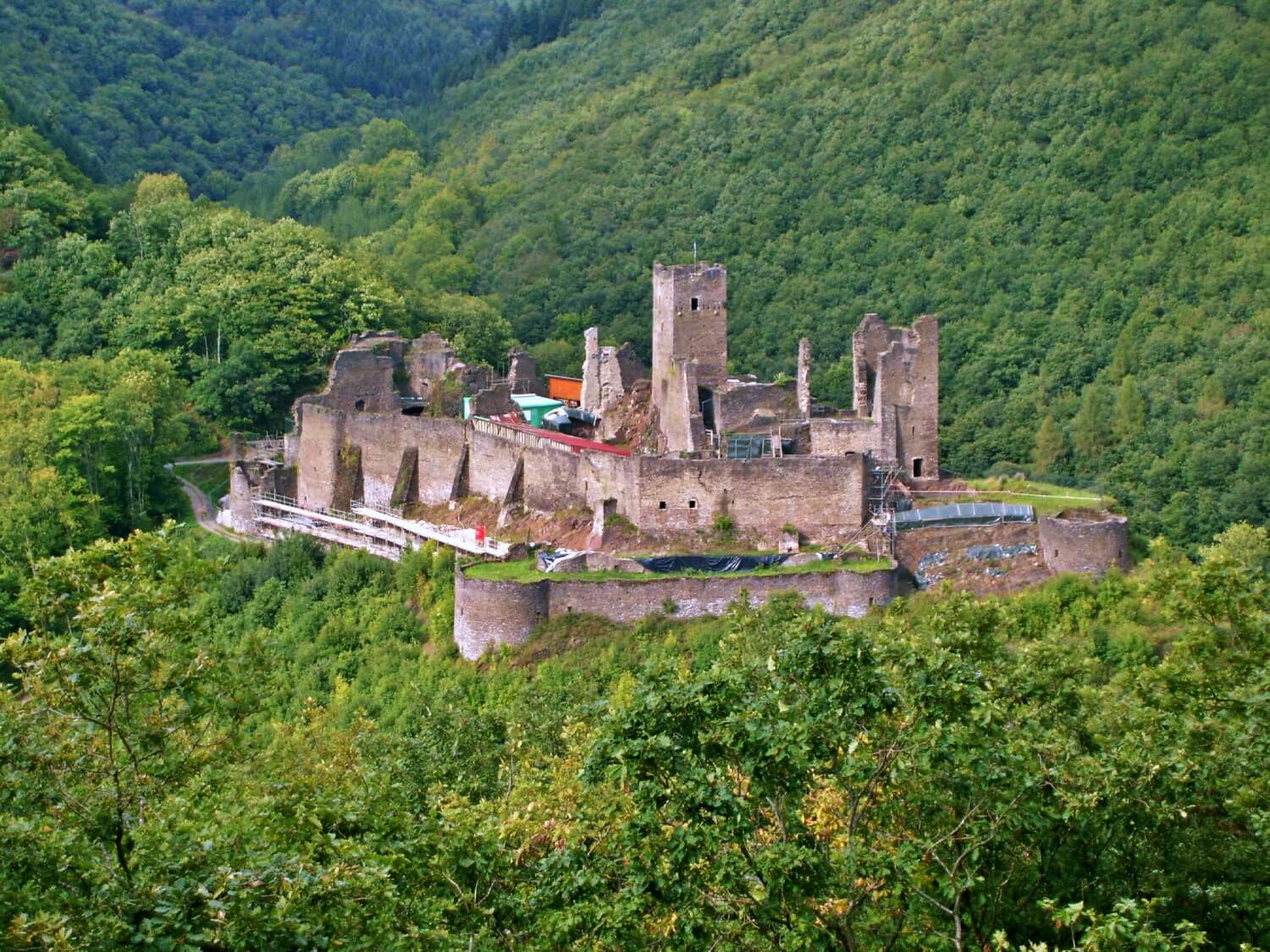
Brandenbourg Castle
Tandel
14.6km
castle, chateau
